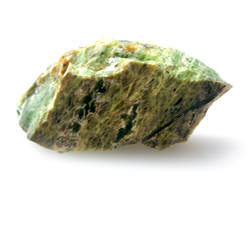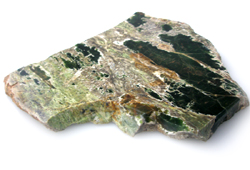 |
|
Chalcedony Chalcedony is a cryptocrystalline form of silica. The gemstone has waxy luster, and may be semitransparent or translucent. It can assume a wide range of colors, but those most commonly seen are white to gray, grayish-blue or a shade of brown ranging from pale to nearly black. Chalcedony occurs in a wide range of varieties. Many semi-precious gemstones are in fact forms of chalcedony. The more notable varieties of chalcedony are as follows: agate, carnelian, chrysoprase, heliotrope, moss agate and onyx. As early as the Bronze Age chalcedony was in use in the Mediterranean region; for example, on Minoan Crete at the Palace of Knossos, chalcedony seals have been recovered dating to circa 1800 BC. People living along the Central Asian trade routes used various forms of chalcedony, including carnelian, to carve intaglios, ring bezels and beads that show strong Greco-Roman influence. Fine examples of first century objects made from chalcedony, possibly Kushan, were found in recent years at Tillya-tepe in north-western Afghanistan. Hot wax would not stick to it so it was often used to make seal impressions. The term chalcedony is derived from the name of the ancient Phoenician town Chalkedon in Asia Minor, in modern English usually spelled Chalcedon, today the Kadıköy district of Istanbul. Chalcedony has successfully been used to provide a pathway for receiving thought transmissions. It can be useful for balancing the energy of the body, mind, emotions and spirit. It alleviates hostilities, irritability, and emotional melancholy and further enhances generosity, responsiveness and receptivity. Chalcedony is a stone to encourage brotherhood among all. It symbolizes benevolence and good will, the benevolence stemming from the nurturing energy within the stone. It has also been shown to initiate miracles, that one would never dream possible. |
|
|
Desert Rosing Trading. All Rights Reserved.


